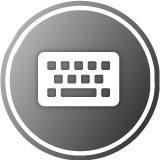
SportsGuyDalton
Verified Member-
Posts
8 -
Joined
-
Last visited
SportsGuyDalton's Achievements
-
Twinsstud12 started following SportsGuyDalton
-
 JDubs reacted to a blog entry:
What Would it Take to be Average?
JDubs reacted to a blog entry:
What Would it Take to be Average?
-
 Minny505 reacted to a post in a topic:
Twins Tidbit: Luis Arraez is a Unicorn
Minny505 reacted to a post in a topic:
Twins Tidbit: Luis Arraez is a Unicorn
-
 Strombomb reacted to a comment on a blog entry:
What Would it Take to be Average?
Strombomb reacted to a comment on a blog entry:
What Would it Take to be Average?
-
 Strombomb reacted to a blog entry:
What Would it Take to be Average?
Strombomb reacted to a blog entry:
What Would it Take to be Average?
-
 Brazilian Twins Fan reacted to a blog entry:
What Would it Take to be Average?
Brazilian Twins Fan reacted to a blog entry:
What Would it Take to be Average?
-
 verninski reacted to a blog entry:
What Would it Take to be Average?
verninski reacted to a blog entry:
What Would it Take to be Average?
-
 TwinsRealist reacted to a post in a topic:
Twins Tidbit: Luis Arraez is a Unicorn
TwinsRealist reacted to a post in a topic:
Twins Tidbit: Luis Arraez is a Unicorn
-
 Mortimerkenny21 reacted to a post in a topic:
Twins Tidbit: Luis Arraez is a Unicorn
Mortimerkenny21 reacted to a post in a topic:
Twins Tidbit: Luis Arraez is a Unicorn
-
 Karbo reacted to a blog entry:
What Would it Take to be Average?
Karbo reacted to a blog entry:
What Would it Take to be Average?
-
 Karbo reacted to a post in a topic:
Twins Tidbit: Luis Arraez is a Unicorn
Karbo reacted to a post in a topic:
Twins Tidbit: Luis Arraez is a Unicorn
-
Twins Tidbit: Luis Arraez is a Unicorn
SportsGuyDalton replied to TwinsData's topic in Twins Daily Front Page News
Arraez' bat control is next level. Even when he swings at a pitch outside the zone, he makes contact 90.2% of the time. Best in MLB by a 5% margin. What a joy to watch. -
 SportsGuyDalton reacted to an article:
Twins Tidbit: Luis Arraez is a Unicorn
SportsGuyDalton reacted to an article:
Twins Tidbit: Luis Arraez is a Unicorn
-
What Would it Take to be Average?
SportsGuyDalton commented on SportsGuyDalton's blog entry in SportsGuyDalton's Blog
Yes this is good to point out! Thanks! Buxton kind of screws up the rest of season projections because he already has so many more HRs than the "average" season. I didn't explicitly make sure OPS matched at the end of the season. Instead, I had each player end the season with as many at-bats, walks/HBP, singles, doubles, triples, and HRs as their "average" season (I only showed some of the projected stats in the table to keep the table size reasonable), then calculated AVG, SLG, and OPS from those numbers. If a player ends the season with the exact statline of the "average" season, the OPS calculations work out. In Buxton's case, he is going to have a better season than the "average" because he would finish the season with as many singles, doubles, and triples as the average season but more HRs because he can't hit -10 HRs the rest of the way, so his final OPS would be higher. So you're totally right, the Buxton OPS number is not exactly what he needs for reach the "average" season (I think Arraez' remaining OPS might be slightly off too, since he has more than 4 HRs). The .907 OPS could be interpreted as the OPS Buxton needs to reach the number of singles/doubles/triples for his "average" season, assuming he hits 0 HRs the rest of the way. -
 SportsGuyDalton reacted to a comment on a blog entry:
What Would it Take to be Average?
SportsGuyDalton reacted to a comment on a blog entry:
What Would it Take to be Average?
-
 SportsGuyDalton reacted to a comment on a blog entry:
What Would it Take to be Average?
SportsGuyDalton reacted to a comment on a blog entry:
What Would it Take to be Average?
-
As we near the final quarter of the MLB season, it’s a good time to take stock of Twins hitters’ performance this season. To gauge which Twins hitters are having good seasons, I will compare each hitter’s 2022 numbers to their "average" season, then calculate how each player needs to perform for the remainder of 2022 to reach their average statline. In other words, what would it take for each player to have their average season? This approach has its flaws and doesn’t work for rookies, but it’s a fun thought exercise. This post is a little math-heavy -- I'll lay out some simple examples along the way. Let’s give it a go. First, I calculate what an "average" 2022 season would be for each player. I start by estimating the number of games each player will play this season based on the share of games they have played to this point. For example, if a player has played 2/3 of all games so far, I estimate they will play 2/3 of the remaining games for a total of 108 games played (2/3 of 162) . Then, using this final 2022 games-played number, I calculate how Twins batters would perform in the full 2022 season based only on their 162-game career averages from before this season. For example, if a player hit 30 doubles per 162 games before 2022 and is projected to play 2/3 of all games in 2022, their "average" 2022 season would include 108 games played and 20 doubles (2/3 of 30). To assess whether a player is performing well or poorly in 2022, I compare their “average” season (above) to their real 2022 statistics, and calculate how each player would need to perform for the rest of the season in order to finish with their average season statline. For example, Gio Urshela's average projections estimate he will hit 14 homeruns in 2022; he currently has 11 homeruns, meaning he needs to hit 3 more before the season ends to have an average season. This helps us gauge performance because, if a player needs to finish the year hitting like prime Barry Bonds to have their average season, that’s an indication they have had a rough season so far. Conversely, a player is probably having a good season if they can reach their career averages by hitting like a slumping Nick Punto for the final month and a half. The table below shows how each batter would need to perform in the final quarter of the season to finish 2022 with their "average" statline. The red boxes highlight areas where players have a lot of work left to do. Green highlights areas where players are in good shape. It’s immediately clear that Gary Sanchez and Max Kepler are unlikely to reach their career averages. I'm not holding my breath for them to combine for 33 homeruns and an OPS around 1.000 in the team's final 46 games. Carlos Correa has been mildly underwhelming across the board in 2022, which is reflected by the hot stretch needed to achieve his average season. It’s not entirely out of the question for Correa to heat up and hit .290/.372/.626 with 9 homeruns the rest of the way, but it’s getting less likely by the day. Polanco and Buxton are interesting cases, posting homerun and walk numbers that blow away their career averages, but both players have sacrificed their batting averages to do so. I think Twins fans have mixed feelings about their approaches to hitting. Urshela has been solid all season, which shows in the mediocre numbers he needs to reach his career averages. And finally, clearly, Luis Arraez has been outstanding in 2022. He could probably hit .237 down the stretch with one arm tied behind his back. Thanks for reading!
-
 SportsGuyDalton reacted to a comment on a blog entry:
Un-Clutch Correa (with a side of Garlick)
SportsGuyDalton reacted to a comment on a blog entry:
Un-Clutch Correa (with a side of Garlick)
-
Un-Clutch Correa (with a side of Garlick)
SportsGuyDalton posted a blog entry in SportsGuyDalton's Blog
Twins fans recently suffered through the offense’s 0-19 stretch with runners in scoring position (RISP) during the team’s road trip to Los Angeles. Such struggles have plagued Twins hitters all season, as their .712 OPS with RISP rank 22nd in MLB and their .249 batting average with RISP ranks 20th. Carlos Correa has been the primary underperformer in these big moments this year. His .618 OPS with RISP ranks 11th among Twins hitters with 30+ at-bats with RISP. This lack of production has contributed to his -0.02 Win Probability Added this season, an abysmal (negative!) statistic for a multi-time All-Star earning $30 million. Stunningly, Correa has hit zero of his 14 homeruns this season with RISP. In fact, Correa’s 14 homeruns this season lead MLB among players yet to hit a homerun with RISP, with a comfortable cushion between Correa and his unfortunate peers (including teammate Kyle Garlick). MLB HR Leaders, Players with Zero HR with RISP: 1) Carlos Correa – 14 2) Darick Hall (PHI) – 9 T3) Kyle Garlick – 8 T3) Frank Schwindel (CHC) – 8 T3) Kolten Wong (MIL) – 8 T3) Brandon Belt (SF) – 8 Bad luck certainly plays a role in such a prolonged dry spell for a player of Correa’s caliber. Coming into this season, Correa had hit 33 of his 133 career homeruns with RISP, including 7 of his 26 homeruns last season. Given Correa’s reputation as a clutch performer and career .812 OPS with RISP—nearly 200 points better than his 2022 number—it’s only a matter of time before he hits a homerun with RISP and removes himself from the leaderboard. Even so, Correa will need to get red-hot down the stretch to finish the season with offensive numbers worth his hefty price tag. Here's to hoping Correa heats up soon and helps the Twins clinch another AL Central crown. -
 SportsGuyDalton reacted to a post in a topic:
Where Did the Good Carlos Correa Go?
SportsGuyDalton reacted to a post in a topic:
Where Did the Good Carlos Correa Go?
-
 SportsGuyDalton reacted to a comment on a blog entry:
Jhoan Duran's Incredible Velocity
SportsGuyDalton reacted to a comment on a blog entry:
Jhoan Duran's Incredible Velocity
-
 SportsGuyDalton reacted to a comment on a blog entry:
Jhoan Duran's Incredible Velocity
SportsGuyDalton reacted to a comment on a blog entry:
Jhoan Duran's Incredible Velocity
-
 SportsGuyDalton reacted to a comment on a blog entry:
Jhoan Duran's Incredible Velocity
SportsGuyDalton reacted to a comment on a blog entry:
Jhoan Duran's Incredible Velocity
-
 SportsGuyDalton reacted to a comment on a blog entry:
Jhoan Duran's Incredible Velocity
SportsGuyDalton reacted to a comment on a blog entry:
Jhoan Duran's Incredible Velocity
-
KimmyJ started following SportsGuyDalton
-
In another sparkling outing last night, Jhoan Duran showcased everything that makes him special. Most notably, his triple-digits fastball. Duran threw only ten pitches last night, including five fastballs. All five exceeded 100 MPH. It’s becoming easy to take Duran’s electric fastball for granted. His delivery looks effortless, yet his average fastball velocity leads the majors at 100.6 MPH. Here are a few charts to remind us exactly how extraordinary Duran’s velocity is. First, Duran is clearly the hardest thrower in Minnesota Twins history. His average fastball velocity is nearly two MPH faster than any other Twins pitcher since 2008 (which is the farthest back I could get data from Baseball Savant), and I can't remember any pre-2008 Twins pitchers lighting up radar guns like Duran. In terms of the sheer number of 100+ MPH pitches thrown, the gap between Duran and the field of Twins pitchers is comical. After last night, Duran has thrown 245 pitches over 100 MPH in his career. The next closest Twins pitcher (since 2008) is Jorge Alcala with just 15. Duran's smokes the rest of MLB too. This season alone, Duran gives most MLB Divisions a run for their money in terms of 100 MPH volume. If Jhoan Duran was his own MLB Division, that division would have thrown more 100+ MPH pitches than the AL East, AL West, and AL Central (minus Duran). The AL Duran pumps heat. The most impressive part of Duran’s velocity is that it doesn’t come at the expense of control. Among the 40 MLB pitchers this season with an average fastball velocity of at least 97 MPH and at least 10 innings pitched, Jhoan Duran’s 5.6% walk rate is fourth lowest. All hail Jhoan Duran.
-
3 Options for Josh Winder in the Second Half
SportsGuyDalton replied to Cody Christie's topic in Twins Daily Front Page News
I think Winder is due for some regression as teams get more opportunities to scout him. He's already had some good luck--his expected ERA(4.14) is a full run higher than his actual ERA (3.12)--and he doesn't have great stuff. I'd be ok if the Twins moved him to the bullpen to protect him. Help him succeed by only facing hitters once or twice per game, then let him be a full-time rotation piece next year. -
It's amazing to me that MLB teams repeatedly draft pitchers who spent 3+ years at a big D1 program and immediately add 5+ MPH to their fastballs just from some mechanical tweaks. With all the analytic/biomechanical information available these days, I'd think D1 programs would be closer to MLB teams in terms of maximizing a player's potential. Good for the Twins though -- I'm excited to follow Povich.
-
 SportsGuyDalton reacted to a post in a topic:
Game Thread: Twins @ White Sox, 7/6/22 @ 1:10PM CT
SportsGuyDalton reacted to a post in a topic:
Game Thread: Twins @ White Sox, 7/6/22 @ 1:10PM CT
-
Game Thread: Twins @ White Sox, 7/6/22 @ 1:10PM CT
SportsGuyDalton replied to twinssporto's topic in Archived Game Threads
And Pagan keeps getting crushed. He has given up HRs at a higher rate than any pitcher in MLB since last August (minimum 40 IP.). I've lost all hope that he will right the ship this season.









